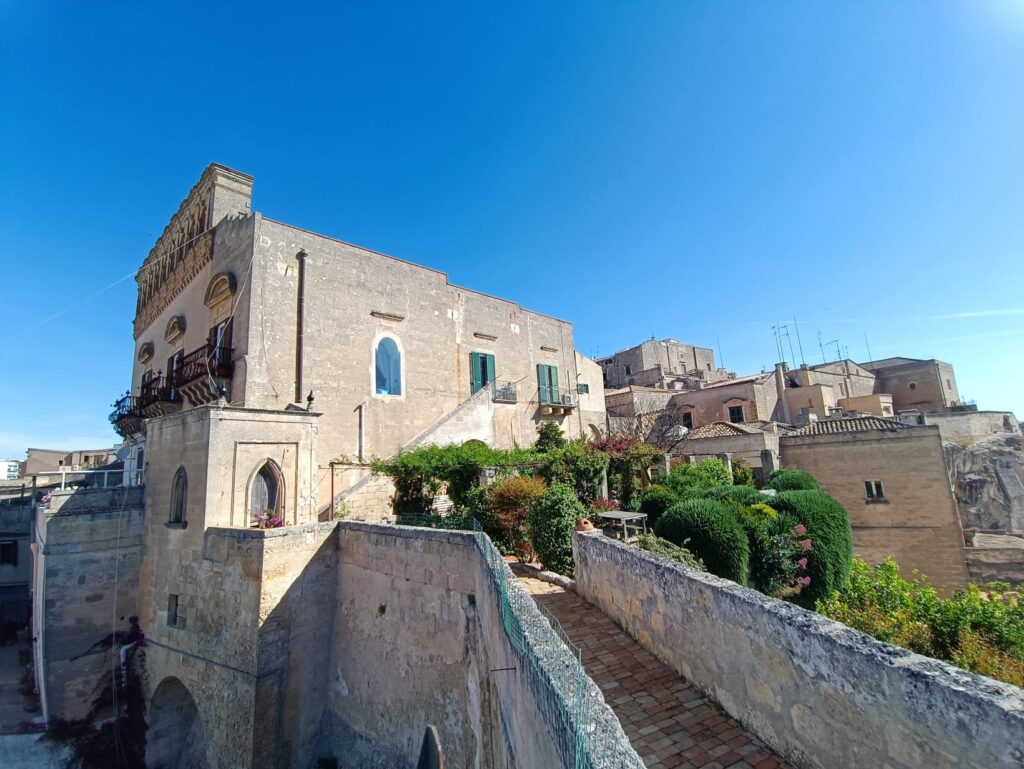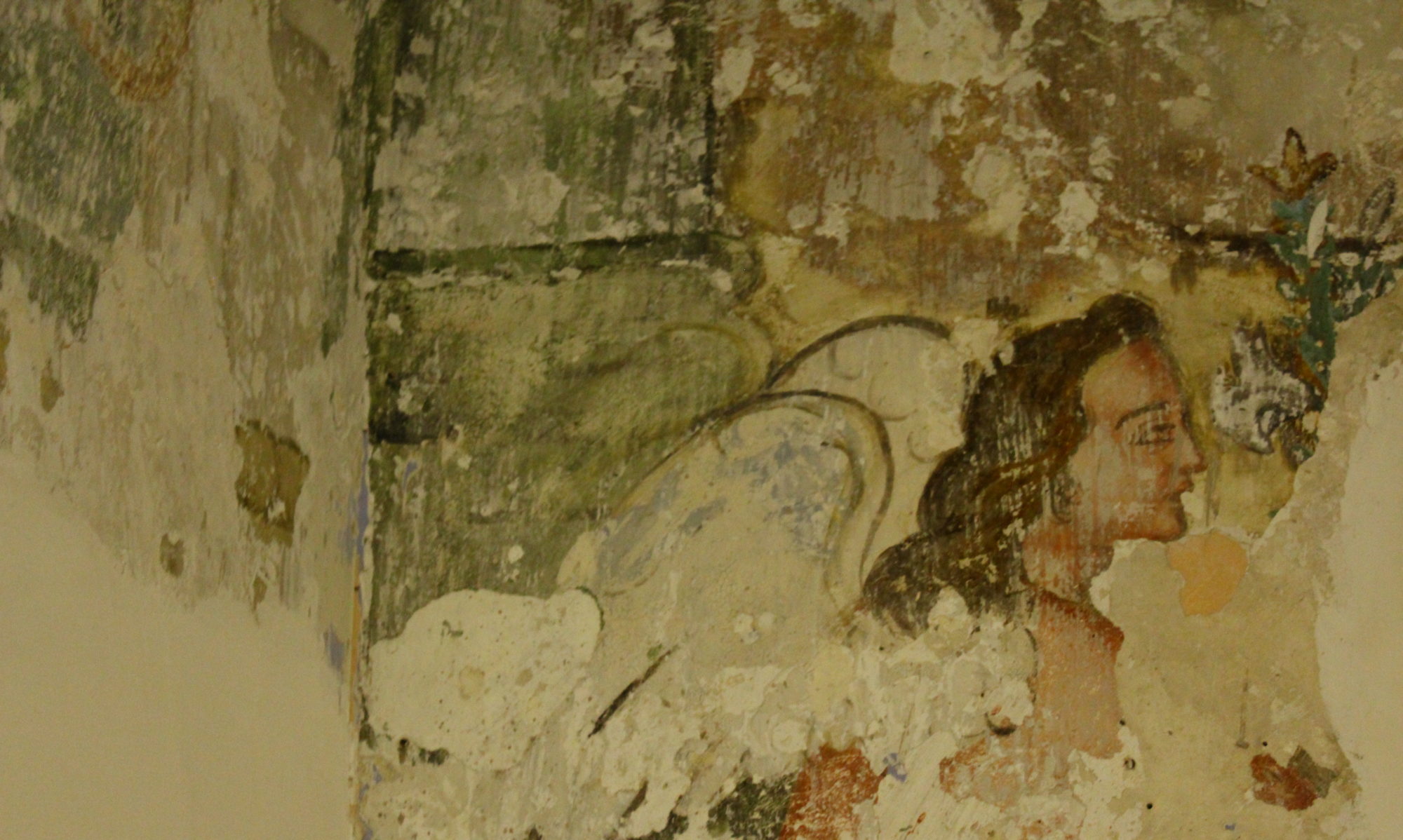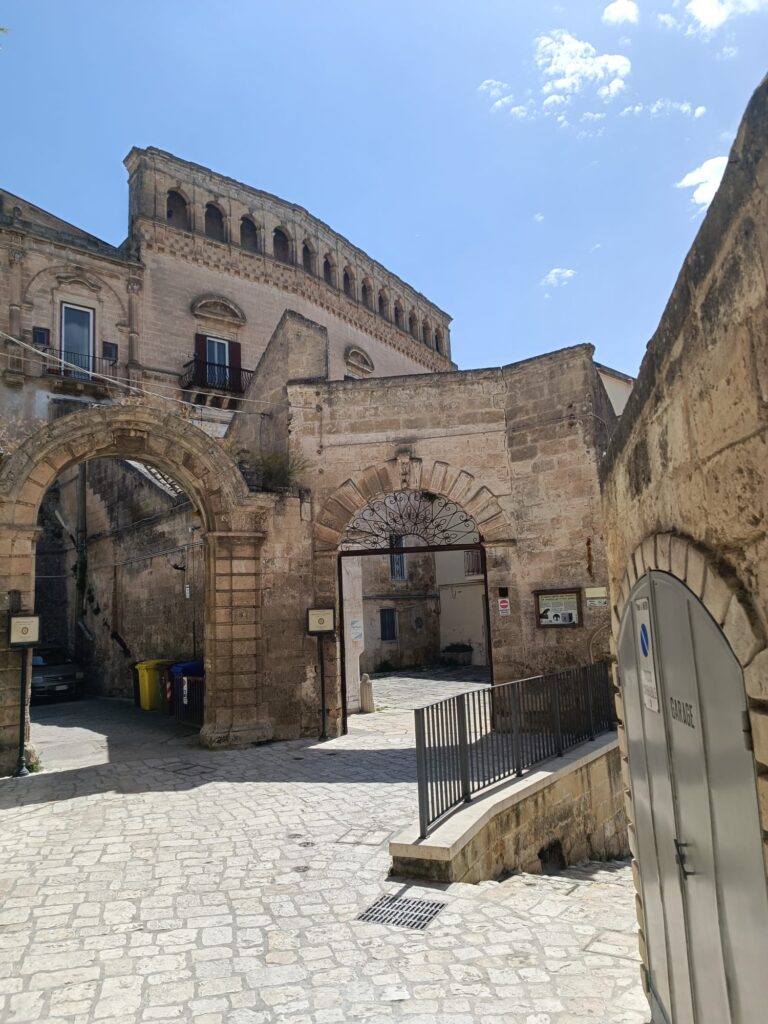
Palazzo Bernardini (historically known as Ferraù or Giudicepietro) is located in a position where the external fortress of a large castle stood at the end of the first millennium.
To the left of the modern entrance to the “Arco del Sedile”, lies what is left of a part of a fortress from the ancient town of Rocca, where the yound “ Loffredo” were pressed by Boemondo to partake in the first crusades.
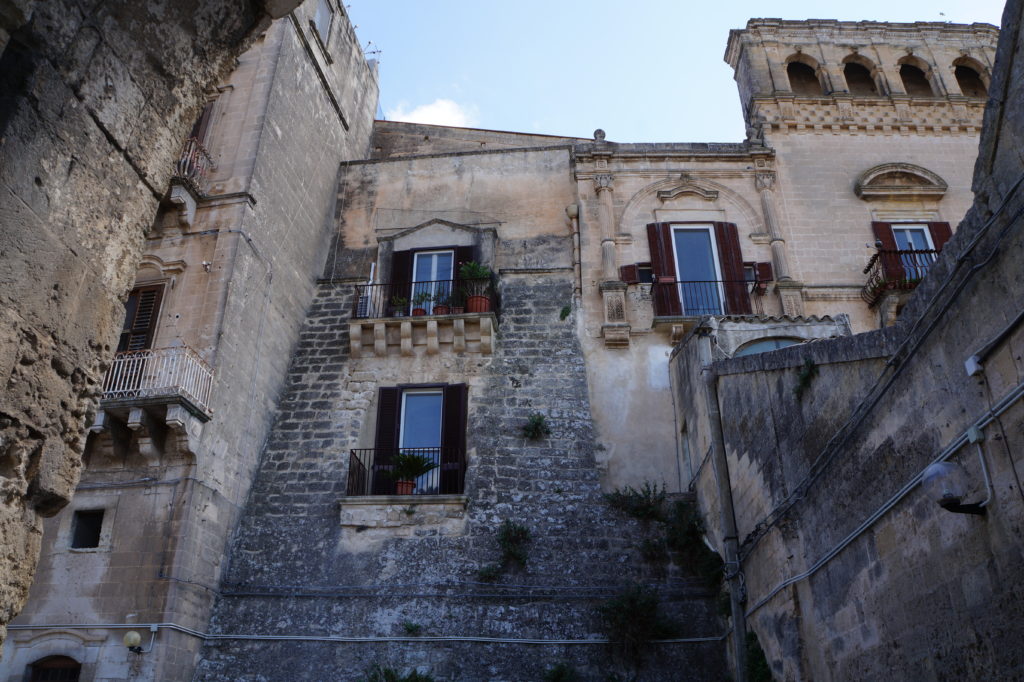
In the 1400’s this area was known as Castiglione or Castelvecchio and was ruled by the Ursino del Balzo family.
The external fortress once contained eight defense towers which were de-militarized in 1448 by Count Giovanni Antonio Ursino, who used them in the construction of the Malvezzi, Santoro and Ferrau’ palaces, which contain materials derived from the remains of the towers.
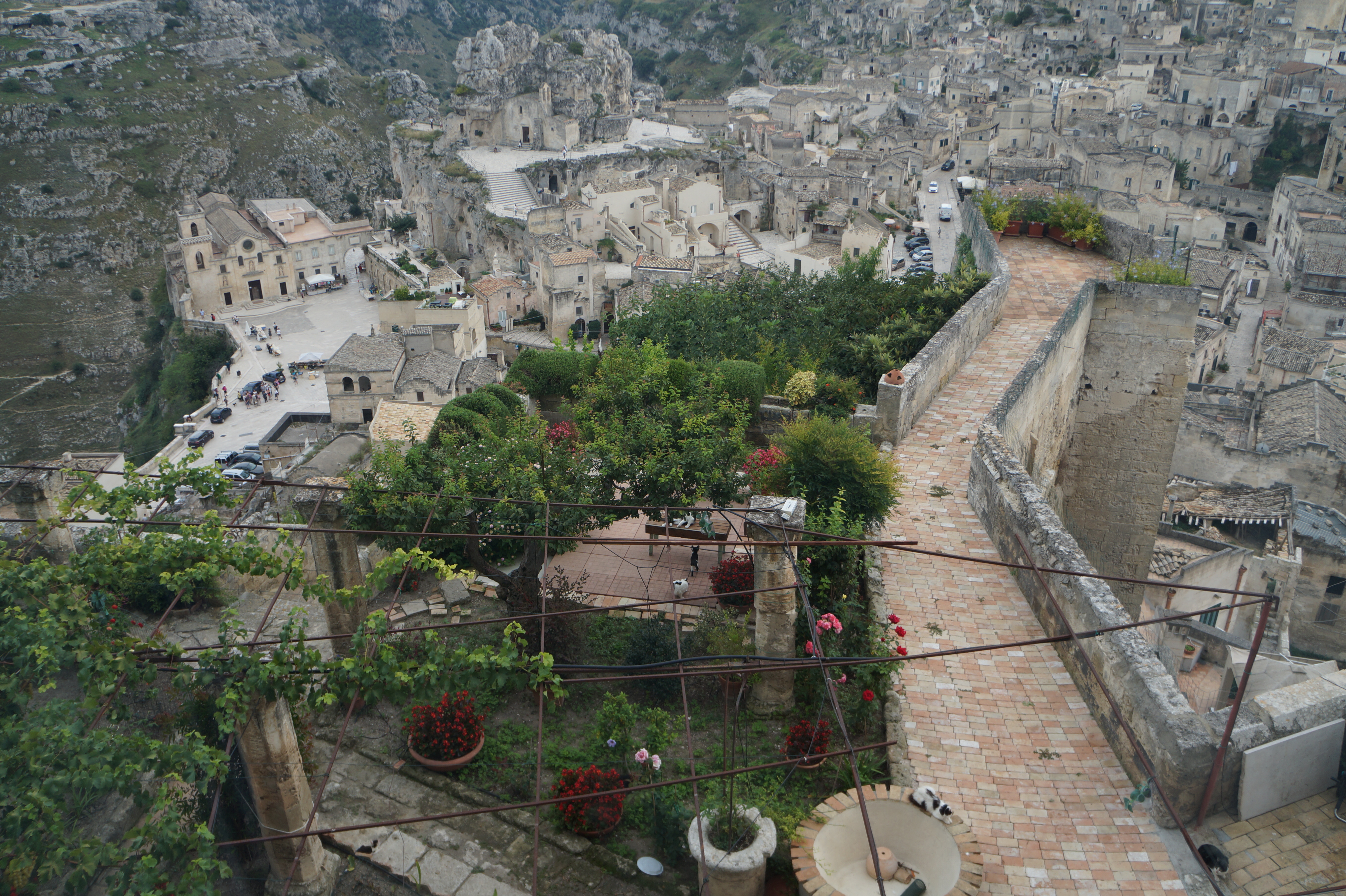
The Ferrau family, an ancient noble family of Matera, divided into different branches and separated. During the middle ages, one branch of the family settled in Calabria, whereas another branch settled in the Altamura area.
In 1732, the palace was inhabited by Don Giuseppe Ferrau, his wife and their eleven children, and governed by the village of Castiglione.
It appears that the current entrance from Piazza Sedile was built in honor of King Joseph-Napoléon Bonaparte’s arrival in Matera on May 30, 1806. who had just obtained reign over the Kingdom of Two Sicilies and was eager to visit several cities in his newly acquired territories. Joseph-Napoléon Bonaparte was King of Naples and Sicily and elder brother of Napoleon Bonaparte.
A triumphant reception from the citizens of Matera awaited his majesty, who was hosted at Palazzo Ferrau’ during his stay in Matera.
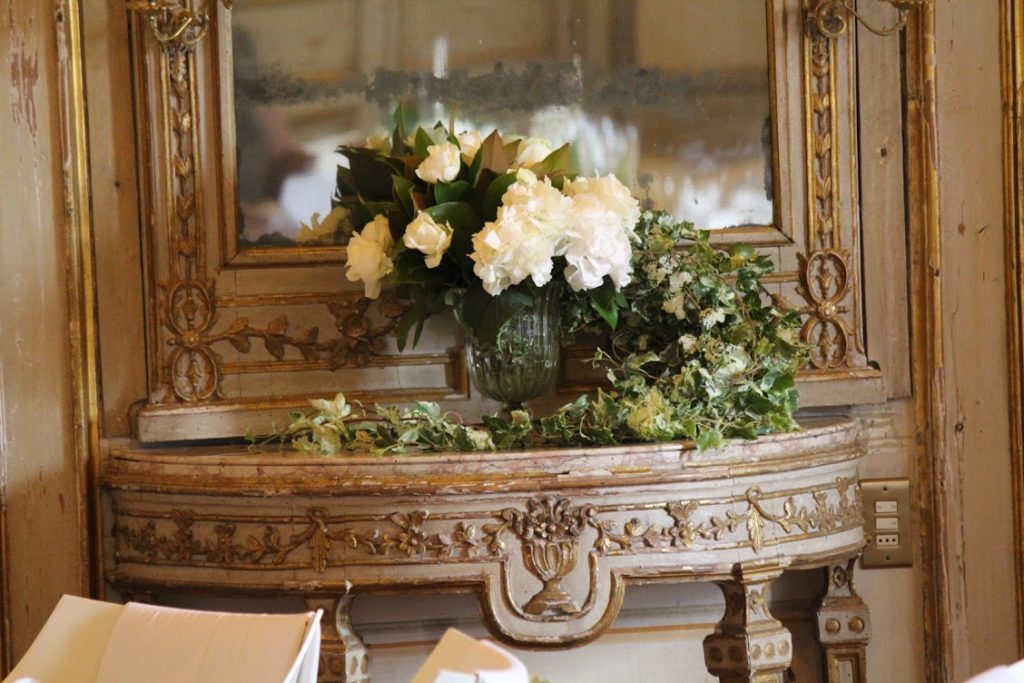
The central salon of the Palazzo was elaborately adorned to celebrate the royal occasion with festive white and gold ribbons and precious white and yellow fabrics covered the walls. The décor was styled in mythological scenes.
A grand ball was held in this salon and was attended by the residing Royal Court as well as the most prominent families in the kingdom. Notwithstanding such an extravagant royal welcome, King Bonaparte was extremely unkind to the city and just a few months later, transferred the Royal Court from Matera to Potenza.
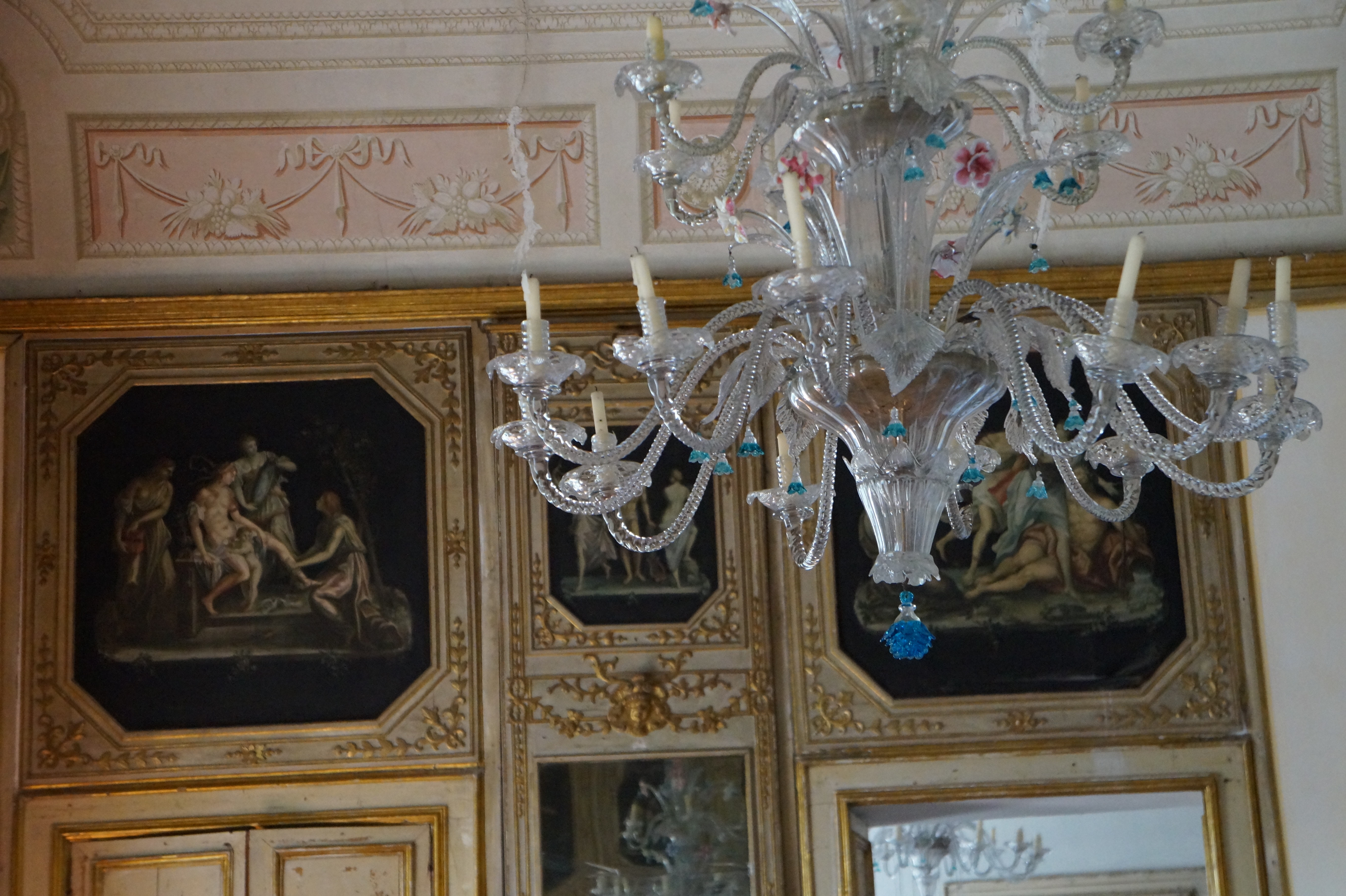
The Ferrau’ family continued to reside in the Palazzo until the 1800’s, when several members of the family settled in Altamura, under the Republic of Naples. Upon the arrival of Cardinal Ruffo, young Giovanni Firrao was known as a republican and was executed by the cardinal in the presence of his father.
The Matera branch of the family had always been involved with the administrative matters and many of them extended to several other areas of business. Among many, noteworthy are the contributions of Giambattista, a well educated man whose contribution to humanity was made in his research and public duty.
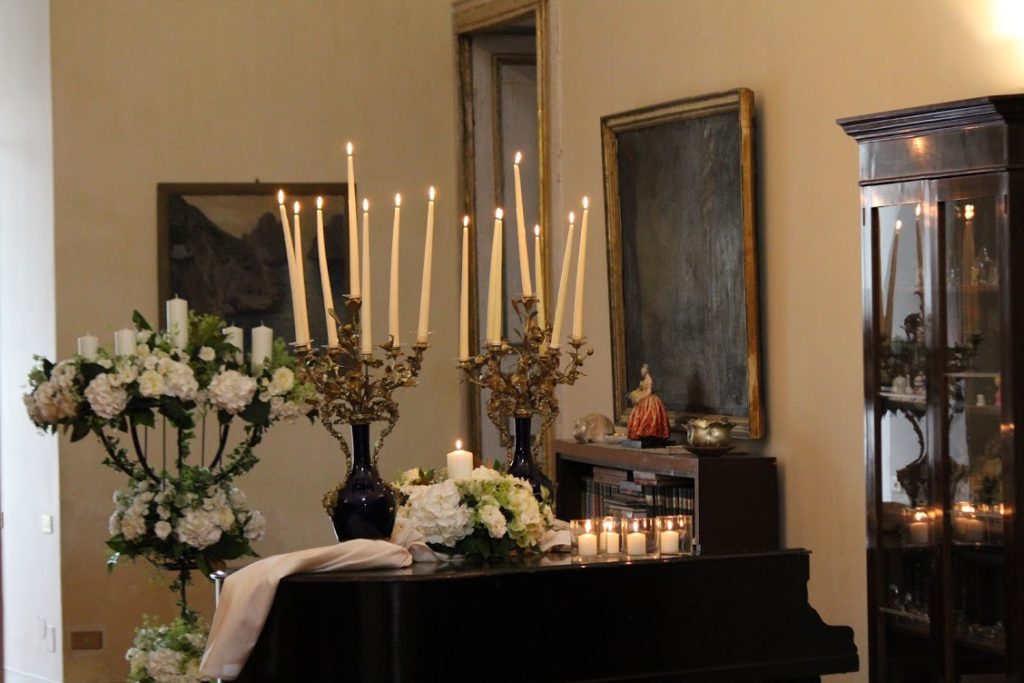
His younger brother Cesare, pursued studies in Naples and later became a well respected military genius responsible for significant military engineering. Cesare’s name is synonymous with the construction of railroads in Italy, as he was responsible for establishing the very first Italian railroad: the Naples-Caserta line.

Palazzo Ferrau’ was later inherited by the Giudicepietro family, merchants from Castellaneta who settled in Matera.
In 1973, Prof. Aldo Bernardini purchased Palazzo Ferrau’ from Carlo Giudicepierto. Prof. Bernardini and his wife Anna Rosa, have taken care of restoring and preserving Palazzo Bernardini, as it is now called, to its present state.
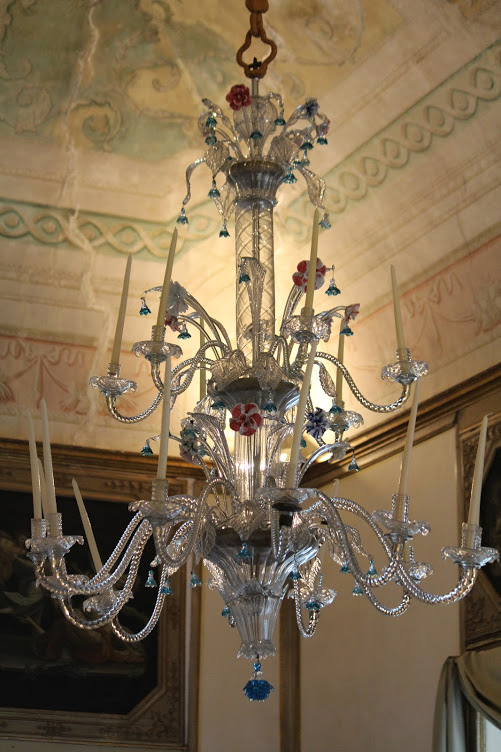
Bibliography
- Mauro Padula, Palazzi antichi di Matera, Altrimedia, Matera-Roma 2002, pp.163-175
- Antonella Miraglia, La galleria di Palazzo Ferraù a Matera, Consiglio regionale della Basilicata, 2004
- Mariagrazia di Pede, I dipinti dei palazzi Ferraù e Malvini Malvezi di Matera e la circolazione di modelli iconografici, in “Leukanikà”, 1-2 (2005),pp. 3
